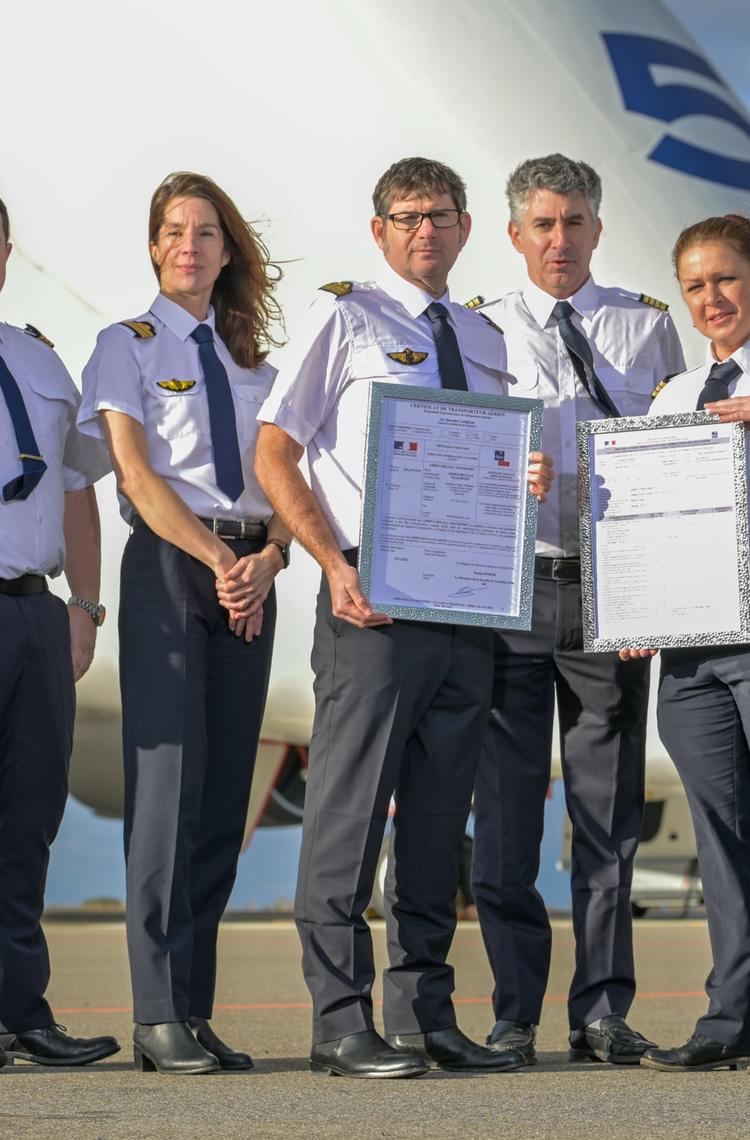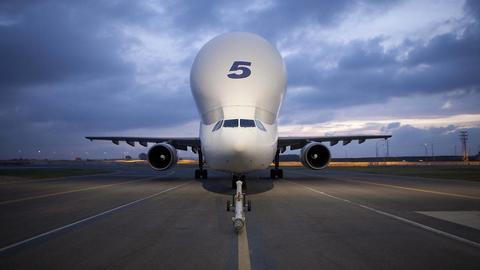Just under two years ago, in January 2022, Airbus launched its outsized air-cargo service, Airbus Beluga Transport (AiBT), operated by Airbus Transport International (ATI). However, the vision was always to create a dedicated airline with its own Air Operator Certificate (AOC). With the latter now awarded, we talk to AiBTs managing director Benoît Lemonnier and also to the head of flight operations Olivier Schneider to learn how this was achieved and what challenges lie ahead.
“For our final dossier we had been compiling many documents during the first half of this year, encompassing Flight Safety, Flight Operations, Ground Operations, Technical Operations and Crew Training,” recalls Benoît Lemonnier, managing director of AiBT.
“We submitted it at the end of June 2023 following which we answered questions and fine-tuned over the summer. Of course, we didn't start from scratch, since we had built on the documentation and processes of ATI.”
Once the decisive audit by the authorities was passed successfully on the 26th of September, there remained one important ‘box to tick’ – the “Continuing Airworthiness Management Organisation” certificate (CAMO), which came at the beginning of November. With all these approvals successfully achieved, AiBT could at last really call itself an ‘airline’ and operate under its own AOC.
Staffing the right people in the right place
Benoît notes that becoming an airline not only entails documentation and compliance to regulation, it was also an effort to set up the company in terms of all kinds of resources.
“We staffed the right people in the right place. First our management was staffed at the beginning of the year until mid-2023. Then we recruited the necessary expert resources in the various fields of flight operations, dispatch crew planning, and also some new pilots. To date we have recruited almost 60 employees into the company – either through external recruitment or via internal job mobility within Airbus, mainly from ATI. We trained our people to be ready from ‘day one’.”
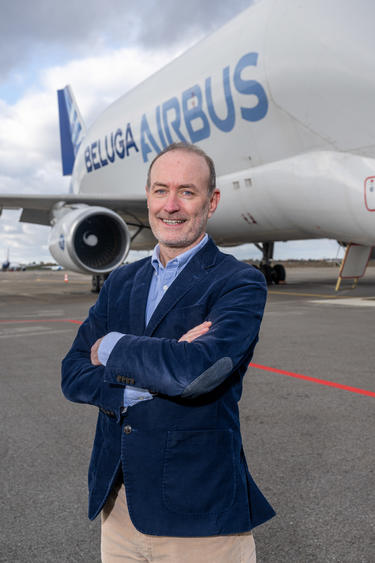
Operating as an autonomous freight airline
“We of course developed our facilities which included the new main office headquarters, close to Blagnac airport,” says Benoît. “We also secured our aircraft operational base at Francazal airport near to Toulouse, with two dedicated parking spots. From there our ground crews have been developing the capacity and capabilities to prepare the Beluga and its missions, especially in terms of loading and unloading the transport pallets as well as managing and maintaining the aircraft."
The other major pillar of the fledgling operation was the official transfer of the BelugaSTs from ATI’s fleet register to AiBT’s (on lease from Airbus). Currently AiBT’s fleet includes three aircraft, with the fourth one due for induction in 2024.
“In short, we now have the aircraft, we have the people and we have the facilities – and the certificate. So now we can operate missions as our own airline!” enthuses Benoît.
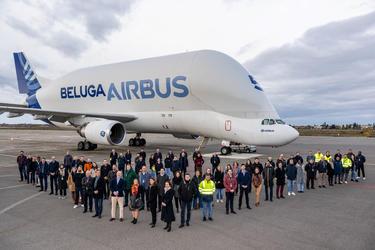
Ramping-up operational experience
Initially, AiBT is starting with flights on the existing Airbus network. “It’s quite important that we don't start with long complex worldwide flights, but rather that our flying crews and ground teams gain experience with short flights contracted by ATI. These flights commenced in November for routes to Saint Nazaire, Hamburg, Bremen, Sevilla etc. This approach allows AiBT to test its internal procedures and to train everyone, especially the new pilots, before it resumes its core business of long-haul missions”, notes Benoît.
Dedicated head of flight operations
A key addition to AiBT’s leadership team is Olivier Schneider who joined in May this year as head of flight operations. He brings with him more than 20 years of experience with the Air France Group as a captain, instructor and most recently as head of flight operations of one of the group’s regional airline subsidiaries.

“The ramp-up of both the operations and the crew training and also the ground support team training is a big challenge,” he says. “We’re learning ‘on-the-fly’ since this type of operation is something brand new for many of the team. Moreover, even if Beluga has been flying from time to time on external long-haul missions, it’s one thing to plan and undertake one long mission, but it’s quite different to perform several of them in the same week.”
Olivier adds: “Another training challenge is in the Operation Control Centre – the ‘control tower’ of the airline – where we smoothly run the operation while training and qualifying two new dispatchers every two months. Our goal is to eventually operate the five Belugas at the same time around the world, which will be a challenge in terms of resources, anticipation and coordination.”
Expanding payload types carried
As the teams build up their experience initially on the short intra-Europe ‘hops’ between Airbus sites (which is also supporting Airbus Commercial’s ramp-up for A350 and Single Aisle programmes), a parallel focus will be for AiBT to expand the scope of certified payloads that will be required for the transportation needs of external customers.
“So far we’ve delivered payloads mainly for Airbus Helicopters and Airbus Defence and Space in 2022/2023 and we're going to expand our customer base in 2024,” predicts Benoit.
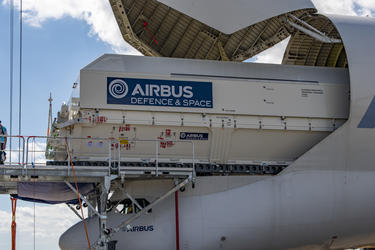
To accelerate this process, AiBT has forged an agreement with Airbus on further investment to certify the BelugaST to carry more types of helicopters, containers and aircraft engines. Having these certifications will really open a significant market, which is what AiBT ultimately targets.
“Later in 2024 we also plan to ramp-up with what we call ‘external flights’, usually long-haul missions,” says Benoît. “We want to achieve three missions per month of that kind in 2024 – on top of the existing missions with the BelugaST throughout Europe in support of ATI’s service for Airbus’ production system.”
Recruiting and training new Beluga pilots
Since the BelugaST is unique to Airbus, there is no immediate ‘ready qualified’ source of pilots on the external job market. Consequently, pilots of other types commonly operated would need to be brought in and trained-up to be type-rated on the Beluga – which takes some time.
To bridge this gap, AiBT has reached an agreement for 12 of ATI’s pilots to join AiBT as captains or first officers for up to three years. After this interim period, these pilots will return to ATI to fly the expanding fleet of brand new A330-200 BelugaXLs.
In parallel, AiBT is actively recruiting pilots from the external world – of which nine have already been inducted, contributing towards an eventual total requirement of around 36 pilots by 2026.
“We are mostly looking for pilots with some experience of flying A300s and A310s – a family which shares the same cockpit and systems as the Beluga,” notes Olivier. “However, there's nevertheless quite a long training path to be followed to become a first officer on BelugaST, then to be promoted to captain. And this is why we need this collaboration with the Airbus ex-ATI pilots who will accompany our development for up to three years.”
AiBT is therefore fortunate to have forged a close relationship with the Airbus Training Center in Toulouse – aimed at being its official EASA-designated “Approved Training Organisation” – where AiBT pilots are able to use the A300/A310 full-flight simulator for type rating and for recurrent training and checks.

Flying Beluga missions – an attractive and exciting challenge for aircrew…
Notably, even pilots coming from regular freight carriers cannot simply slot into a Beluga operation, since the mission and flight profiles are so different – hence the new training and type-rating required. Nevertheless, Benoît and Olivier stress the attractiveness for external pilots to join the Airbus subsidiary, not only to work in a company with a leading brand like Airbus which offers various career-development opportunities, but also because flying the iconic Beluga and performing its missions is in itself an exciting challenge.
For example, the Beluga fleet was built for the European network, whose sectors are around four hours maximum. For AiBT’s long haul missions, however, its crews will have to fly several ‘legs’ before reaching their destination. “That will be something new for many experienced long-haul aircrew who are used to flying from Europe to Singapore, in 13 hours from start to finish. Whereas with the Beluga we are talking about four legs spread over two days to get there,” explains Olivier.
Its pilots will also need to fly some missions at 20,000 ft at around Mach 0.7, versus the typical 35,000ft cruising altitude and Mach 0.8 speed of regular freighters. The reason for this is that certain payloads, especially helicopters, are not generally certified for exposure to altitudes of more than 20,000 ft – a constraint that needs to be maintained while they are being carried the Beluga’s unpressurised cargo hold. (In contrast, when carrying a space satellite payload the Beluga will cruise higher, since spacecraft are built to operate in the vacuum of space.) Furthermore, Belugas will experience varied weather conditions at lower cruise altitudes, which, by contrast, regular air freight aircraft would not encounter higher up at 35,000 ft.
Another difference versus a normal freighter mission, relates to the ground operation: The Beluga’s main cargo deck is quite high from the ground, so there's a lot of coordination needed and special crew to unload the payload at the destination – which is a key part of the operation requiring several hours to accomplish.

Summing-up, Olivier says: “Our goal is to have a fleet of five Belugas operating all around the world. To achieve this will be the culmination of several years of hard work. I really look forward to this day, and the thought of Airbus’ mythical Belugas flying over the world’s continents fills me with eager expectation. The market is here, we will do our best to achieve this!”
Your media contacts
Contact us
Martin Fendt
Airbus Corporate Communications - Airbus Commercial Aircraft
Latest news
Continue Reading
Airbus Avionics deploys a unique logistics centre dedicated to radomes
Web Story
Services
Airbus Avionics is proud to announce the opening of its brand-new Radome Logistics Hub, strategically located in Tremblay-en-France.
The passenger-favourite A220 gets an Airspace cabin
Web Story
Aircraft

A suite of comprehensive services to keep the A220 flying
Web Story
Aircraft
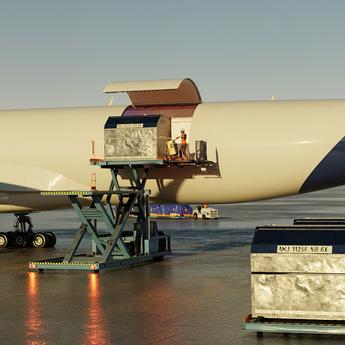
A350F: what makes the world's largest main-deck cargo door a special one...
Web Story
Aircraft
Airbus confirms Hughes as an additional provider of LEO and GEO services for HBCplus
Web Story
Services
